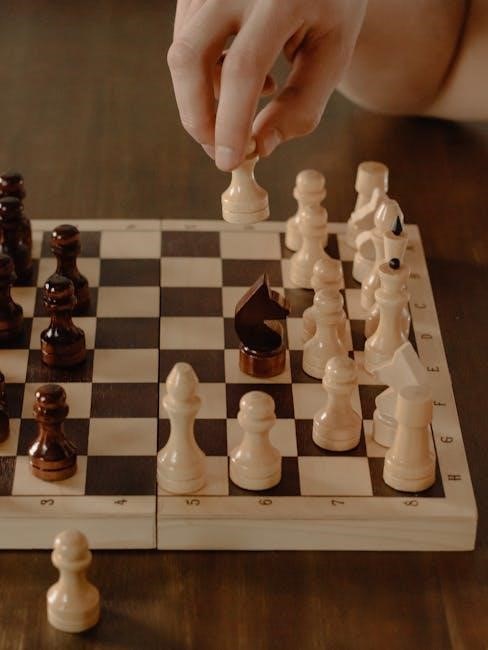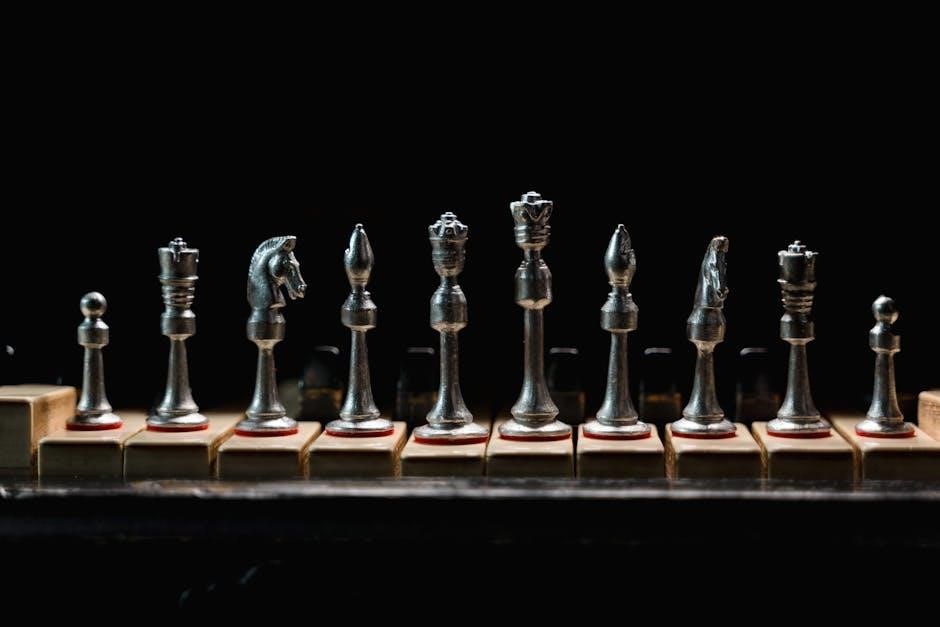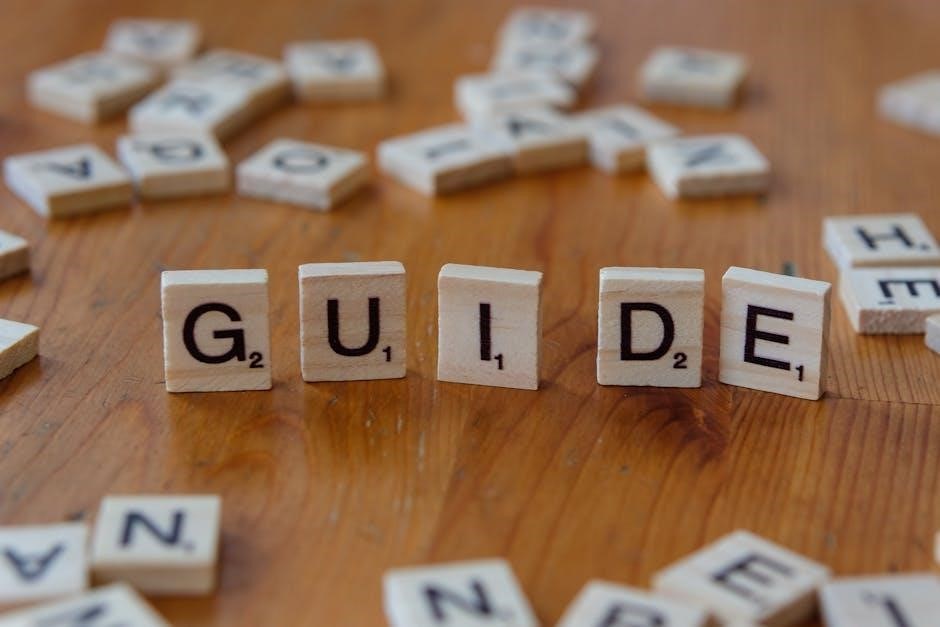The Frustration board game is a classic family-friendly game combining strategy and luck. Players race to move their pegs around the board, with the Slam-O-Matic feature adding excitement.
1.1 Overview of the Game
Frustration is a classic board game designed for 2-4 players, suitable for ages six and up. It combines strategy and luck as players race to move their pegs around the board. The Slam-O-Matic feature adds excitement, allowing players to send opponents’ pegs back. The goal is to be the first to get all pegs into the finish area, blending fun and frustration perfectly.
1.2 History and Popularity
Frustration, also known as Trouble in the US and Kimble in Finland, has been a beloved board game since its introduction in the 1960s. Its popularity endures due to its simple yet engaging gameplay, making it a staple in many households. The game’s Slam-O-Matic feature and strategic elements have contributed to its long-standing appeal, often recommended for family game nights and casual gatherings across generations.
Number of Players and Age Range
Frustration is designed for 2-4 players aged six and up, making it an ideal family-friendly game for gatherings and casual play across various age groups.
2.1 Suitable Age Group
Frustration is designed for players aged six and up, making it accessible to children while offering enough strategy to engage adults. The game’s simplicity and excitement cater to a broad age range, ensuring fun for families and casual gamers alike. Its straightforward rules and competitive nature make it suitable for both younger and older players.
2.2 Recommended Number of Players
Frustration is designed for two to four players, ensuring dynamic and competitive gameplay. With more players, the game becomes livelier, increasing the chances of strategic moves and interactions. The optimal number of participants enhances the experience, balancing both fun and challenge for all involved in the race to the finish line.
Setting Up the Game
Assemble the game board by fitting it over the plastic game unit. Each player selects four pawns of their chosen color and places them in their home area.
3.1 Assembling the Game Board
To assemble, turn the plastic game unit upside-down and place the gameboard face down over it, ensuring it fits securely. This setup creates the playing surface with the finish area and home sections clearly marked for each player’s pawns. Make sure all parts are aligned properly before starting the game.
3.2 Initial Setup and Distribution of Pieces
Each player selects four pawns of their chosen color and places them in their respective home area. The game board is placed in the center, and the dice is ready for the first roll. Ensure all pawns are correctly positioned before starting. The Slam-O-Matic feature is prepared to add excitement to the gameplay experience.
Objective of the Game
The objective is to be the first player to move all four of your pegs around the board and into your finish area. Each peg must complete the full circuit to win. The Slam-O-Matic feature adds excitement, allowing players to send opponents back, making the race to the finish line unpredictable and thrilling.
4.1 Main Goal
The main goal is to be the first player to move all four of your pegs around the board and into your designated finish area. Each peg must travel the entire circuit, navigating challenges and avoiding opponents. The Slam-O-Matic feature allows players to send opponents’ pegs back, adding excitement and unpredictability to the race. Reaching the finish line first ensures victory, making strategy and luck essential for success.
4.2 Additional Objectives
Additional objectives include minimizing setbacks caused by opponents, strategically using the Slam-O-Matic feature, and blocking competitors effectively. Players must also aim to avoid being sent back, while efficiently utilizing dice rolls to progress. Balancing patience with proactive moves is key, as the game rewards both skill and luck in navigating challenges and maintaining steady advancement toward the finish line.

Movement Rules
Movement is determined by rolling a die, with each number indicating how many spaces to move. The Slam-O-Matic feature adds excitement, allowing players to send opponents back, while strategic planning is crucial to navigate the board efficiently and reach the finish line first.
5.1 Rolling the Dice
Rolling the dice determines movement in the Frustration board game. A six-sided die is used, with each number indicating the number of spaces a player can move their peg. Rolling a six allows a player to move a pawn from its starting position. The dice roll is essential for progression, blending luck and strategy seamlessly.
5.2 Moving Your Pegs
Players move their pegs based on the dice roll, advancing the corresponding number of spaces. Only one peg can be moved per turn. To start, a peg must be rolled out of its starting position with a six. Strategic movement is key, as players aim to navigate their pegs around the board efficiently while avoiding opponents. The game balances luck and skill.
5.3 Landing on Occupied Spaces
Landing on an occupied space allows you to send an opponent’s peg back to the starting point, adding a strategic layer. This can slow down competitors and provide an advantage. Players must decide whether to focus on advancing their own pegs or disrupting others, balancing progression with tactical interference to gain an edge in the race to the finish.

Dealing with Frustration
Dealing with frustration involves handling setbacks, like being sent back or missing turns. Use the Slam-O-Matic feature strategically to hinder opponents while maintaining patience and focus.
6.1 Sending Opponents Back
In the Frustration board game, landing on an occupied space allows you to send an opponent’s pawn back to its starting position. This strategic move can significantly delay their progress and provide you with a competitive advantage. Use this tactic wisely to maintain your lead and control the game’s momentum effectively.
6.2 Strategic Defense
Strategic defense in Frustration involves positioning your pawns to block opponents while protecting your own progress. By anticipating moves, you can use the Slam-O-Matic feature to send opponents back, safeguarding your pawns. Balancing defense with offensive moves is key to maintaining control and securing your path to victory without hindering your own advancement.
Winning the Game
To win, move all four of your pegs into your finish area. The first player to achieve this secures victory, ending the competitive excitement immediately.
7.1 Reaching the Finish Line
To reach the finish line, players must navigate their pegs around the entire board. Each peg must complete the circuit and land precisely in the designated finish area. The finish area has four slots matching your pegs’ colors, ensuring only your pegs can occupy them. Successfully moving all pegs into these slots is crucial for victory.
7.2 Final Victory
The game concludes when one player successfully moves all four pegs into their respective finish area slots. This achievement triggers excitement and satisfaction, marking the end of the competition; The winner is declared, and the game officially concludes with their victory celebrated.

Variations and Expansions
- Players can create house rules, such as adding extra challenges or modifying movement rules for increased difficulty.
- Official expansions introduce new gameplay mechanics, like special power cards or alternate board layouts, enhancing replayability.
8.1 House Rules
House rules offer creative twists to enhance gameplay. Players can introduce challenges like drinking rules or modified movement restrictions. Some add bonus spaces or penalties for landing on specific areas. These customizations allow players to tailor the game to their preferences, making it more engaging or competitive while maintaining the core objective of reaching the finish line first.
8.2 Official Expansions
Official expansions for the Frustration board game introduce new gameplay mechanics and features. These include additional board layouts, extra pegs, and special power cards. Expansions often add unique challenges or shortcuts, enhancing the game’s replayability. They may also introduce team play options or themed variations, keeping the game fresh for experienced players while maintaining its core excitement and strategic elements.
Strategy Tips
Balance luck and skill by prioritizing peg movements and strategically defending against opponents. Patience is key; persistent play increases chances of reaching the finish line first successfully.
9.1 Balancing Luck and Skill
Luck plays a role through dice rolls, but skill shines in strategic decisions. Prioritize moving pegs closer to the finish and defend against opponents by blocking their paths effectively. Patience is crucial, as timing and foresight can turn luck into victory, ensuring progress while minimizing setbacks caused by others’ moves or unfavorable rolls.
9.2 Blocking Opponents
Strategically position your pegs to block opponents, forcing them to backtrack. Landing on occupied spaces sends others back, disrupting their progress. Prioritize blocking in high-traffic areas while balancing your own advancement. This defensive tactic requires skillful planning, as it can delay opponents significantly, giving you a strategic advantage in the race to the finish line.
9.3 Patience and Persistence
Patience and persistence are key to mastering Frustration. Waiting for the right moment to move or block can turn the tide. Don’t get discouraged by setbacks—focus on long-term goals. Stay calm under pressure and adapt to unexpected challenges. These traits help you navigate the game’s unpredictable nature, ensuring you stay competitive until the final move.

Components and Troubleshooting
The game includes a board, pegs, dice, and Slam-O-Matic feature. Troubleshooting involves ensuring proper assembly and resolving jammed parts by following instructions carefully to maintain smooth gameplay.
10.1 Essential Components
The Frustration board game includes a foldable game board, four sets of colored pegs, a six-sided die, and the Slam-O-Matic unit. Additional components are the plastic game unit and the instruction manual. Ensure all parts are included for proper gameplay and assembly. Missing pieces may require replacement for optimal play experience.
10.2 Common Issues and Solutions
- Lost or damaged pegs: Contact customer support or use substitute tokens temporarily.
- Slam-O-Matic not popping: Gently clean the mechanism with a soft cloth and ensure proper assembly.
- Board not fitting: Double-check the assembly instructions and align pieces carefully.
- Rules disputes: Refer to the official manual or agree on house rules to continue play.
